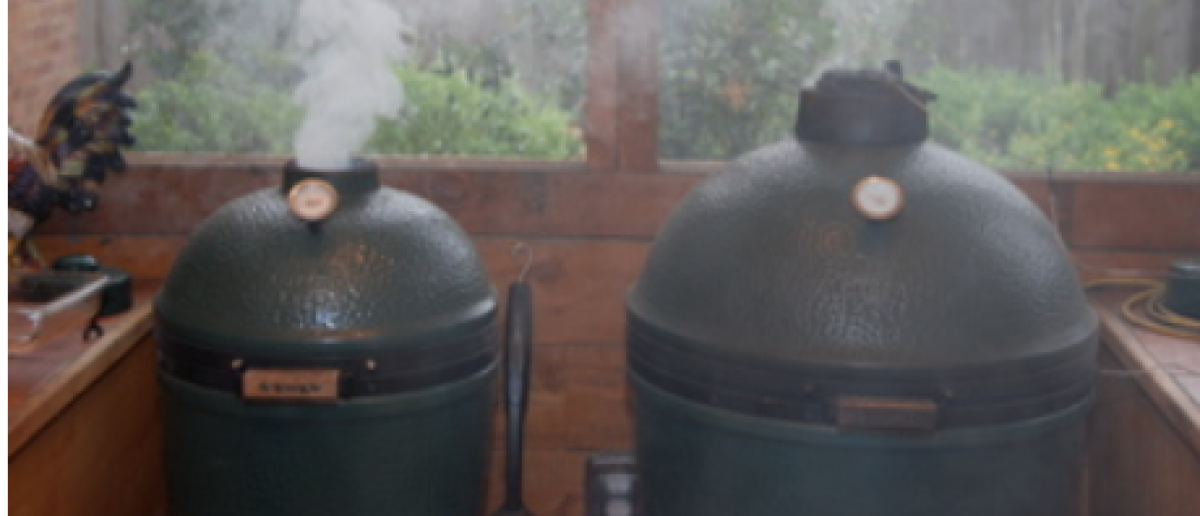
Plain pork tenderloins and loins have not been Jana’s favorite because they are often bland or even dry. In the past I have stuffed them with a variety of ingredients. Since the stuffing retains moisture and adds internal flavor, they have been acceptable.
A couple of months ago I purchased some packets of pork tenderloins from Sam’s Club (their pork is not injected with water or salt solutions, like most grocery store brands). These packets weigh about 2 pounds and have 2 tenderloins per pack. After a bit of Internet research I came up with this recipe. Jana said it was perfect and was definitely a “do over”!
The keys to this recipe are two-fold: (1) A flavor brine, and (2) flattening the cut tenderloins with a meat mallet or the edge of a heavy glass. According to Cooks Illustrated one can increase the surface area of a filleted pork tenderloin by 33% by pounding out the rounded surface. More surface area equals more surface in contact with the grill and the benefits of caramelizing the exterior of the ‘steak’.
Pork Brine: A 5-8% solution of salt in water is a basic brine. One can use the brine alone or add rubs, herbs, or other flavors that will be infused into the meat along with the salt. The penetration of the moisture and flavors into the meat is dependent on the time in the brine and the thickness of the meat. The easiest way to make salt solutions of different percents is using metric measurements. 50 gm (by weight) of salt in 1 liter (1000 gm weight) of water is 5%. Since most of us don’t have scales that weigh in grams, the closest “English” formula is to use 1/4 cup of Morton Kosher salt in 1 quart of water (this makes an approximately 6% salt solution). The type & brand of salt used with the “English” formula is important, as table salt, Morton & Diamond Crystal Kosher salts have different equivalents, based on the size of their crystals (Explanation of different salts).
The recipe: The first step is to brine the whole tenderloin in a 5-6% salt solution with a tablespoon of the rub added to help the flavor penetrate the dense muscle fibers of the pork. The recipe calls for adding ice cubes to the brine to help get the solution cool quicker before it goes in the fridge for a minimum of 45 minutes up to overnight.
Once brined, the meat is removed from the solution and some of the salt is briefly rinsed off under running water. Cut the tenderloin in half crossways, then cut each piece lengthwise, giving you 4 pieces that are flat on one surface and curved on the other. In the picture below one of the halves has been split lengthwise and the other has not.

Put the pieces into a heavy baggie (freezer bag), then pound flat with a mallet or the bottom edge of a heavy water glass. Try to leave the filet (steak) about an inch thick.

Lightly season with the seasoning or rub of your choice (tonight I used a locally made rub – “Rebel Rub” by Rebel Butcher Supply in Pearl, MS).
The grill: Prepare the Egg (or other grill) for an elevated direct cook at 400-500* (I used “Grill Grates” on top of my regular grid). Oil the grid with a paper towel soaked in vegetable oil to prevent sticking. Grill the steaks for about 2-3 minutes on each side and remove when the internal temperature reads between 135 and 140*. Cover and rest until ready to serve.

Let night, t0 be compliant with our Ideal Protein diet, we each had 8 oz (precooked weight) and 1.5 cups of oven-roasted asparagus. We also had a salad of 1/2 cup cherry tomatoes with sliced cucumbers and radishes. Jana made a dipping sauce (soy + Sriracha) from an IP video for the meat.

Enjoy,
Misippi Egger
(Clark Ethridge)
Serves 2
Ingredients:
1 pork tenderloin, about 1#
50gm (or 1/4 cup) Morton’s Kosher salt
1 liter (or 1 quart) cold water
1 tablespoon of rub, seasoning, or savoy herbs, plus more for seasoning for the grill
Instructions:
(1) Add the salt and rub to 800 ml (or 3 cups) of cold water. Mix well to dissolve the salt in the water. Add ice cubes to bring the volume up to 1 liter (or 1 quart). Place the whole tenderloin in a gallon ziplock bag, add the brine solution and seal the bag, squeezing out as much of the air as possible. Put the bag in a pan or bowl (in case of leaks) and place in the refrigerator for 45 minutes or up to overnight (turn occasionally to help the brine stay in contact with all sides of the meat).
(2) About 30 minutes prior to grilling, prepare the Egg (or other grill) for a 400-500*, elevated direct cook.
(3) Remove the meat from the bag and briefly rinse under running water to remove some of the salt. Cut the tenderloin in half crossways, then cut each piece lengthwise to create 4 filets that are flat on one surface and slightly rounded on the other. Place these filets in a thick bag and pound with a meat mallet (or the bottom edge of a heavy water glass) until the filets are flattened, trying to leave them about 1 inch thick.
(4) Soak a paper towel or rag in vegetable oil and using tongs swab the grid generously to reduce the meat sticking to the grid. Place the filets (steaks) on the grid and grill for about 2-3 minutes on each side. Remove when the internal temp reaches between 135 and 140*. (Overcooking might result in dry, chewy steaks). Rest, covered until ready to serve.



